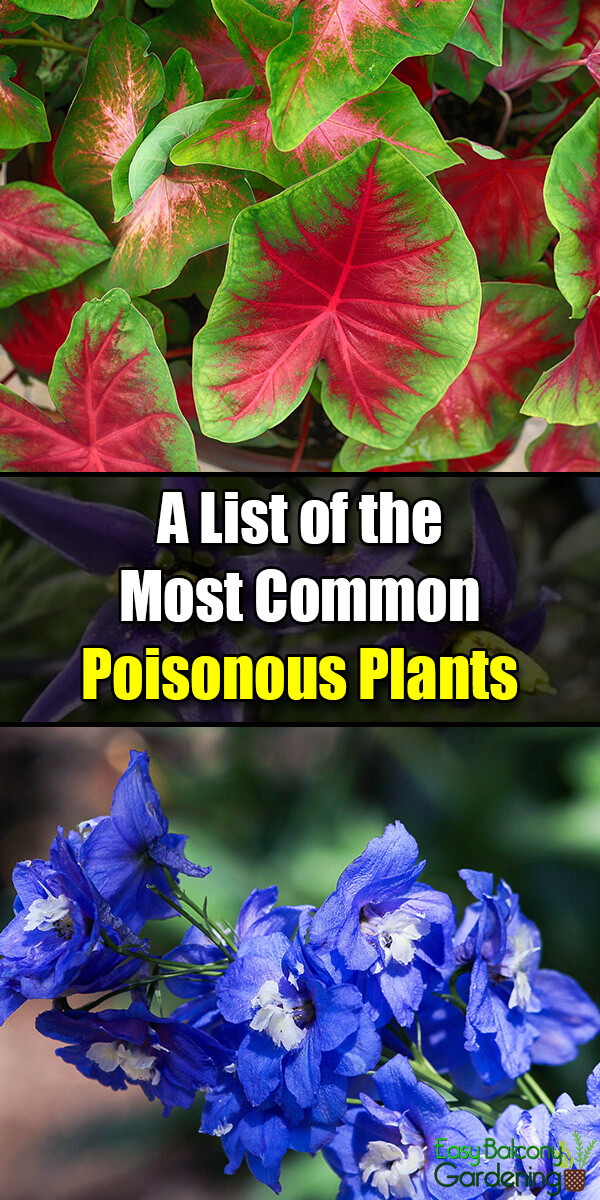This information on poisonous plants is from a leaflet published by the Utah Poison Control Center (UPCC). The UPCC is a 24-hour resource for poison information, clinical toxicology consultation, and poison prevention education. The UPCC is a program of the University of Utah, College of Pharmacy. It is staffed 24 hours a day with registered pharmacists, nurses, and physicians with additional training in clinical toxicology. The UPCC is a Certified Regional Poison Control Center and is nationally recognized by the American Association of Poison Control Centers.
Do You Know About Your Plants?
House plants are a common cause of poisoning in children. If you do not know the name of a plant, have it identified at a garden control center near you or check the website of the poison control center in your area.
Poisonous Plants
The following poisonous plants are the most frequently encountered by the UPCC and considered toxic. They may be dangerous. The list of poisonous plants is not necessarily comprehensive. If you do not find a suspect plant on the list, please call or write the poison control center in your area.
| A Apricot Kernels Arrowhead Autumn Crocus | B Baneberry Black Locust | C Caladium Calla Lily Castor Bean Chokecherry Cotoneaster | D Daffodil Bulb Daphne Death Camus Delphinium Devil’s Ivy Dieffenbachia (Dumb Cane) Donkey’s Tail |
| E Elderberry English Ivy | F False Hellebore Foxglove | G Geranium Grape Hyacinth | H Holy Berries Hyacinth Hydrangea |
| I Iris | J Jack-in-the-Pulpit Jimson Weed (Thorn Apple) | K None mentioned | L Lantana Camara (Red Sage) Larkspur Lily of the Valley Lobelia Lupine |
| M Mayapple Mistletoe (Mandrake) Monkshood (Wolfsbane) Morning Glory | N Narcissus Nightshade | O Oleander Oxalis | P Peace Lily Periwinkle Philodendron Poison Hemlock Poison Ivy & Oak Pyracantha Potato Sprouts Primrose |
| Q None mentioned | R Ranunculus Rhododendron Rhubarb Blade Rubber Tree | S Snow on the Mountain Star of Bethlehem Stinging Nettle Sweet Pea | T Tomato Vines Trumpet Tree Tulip Bulb |
| U None mentioned | V None mentioned | W Water Hemlock Western Whorled Milkweed Wisteria | X None mentioned |
| Y None mentioned | Z None mentioned |
Please Use Caution:
- Never eat any part of an unknown plant or mushroom. Teach children never to put leaves, stems, bark, seeds, or berries in their mouths.
- Keep poisonous house plants out of reach of young children. Store bulbs and seeds out of sight and out of reach.
- Learn to identify the poisonous plants in your yard and neighborhood. The poison control center cannot identify a plant from a telephone conversation.
- Do not assume a plant is safe because birds or other animals eat it.
- Do not rely on cooking to destroy poisons in plants. Be cautious when using plants in nature as a medicine or tea. Undesirable effects may occur.
- Any plant may cause reaction to certain people
- If a plant is eaten, remove the rest of the plant from the mouth. Rinse the mouth with water. Call the poison control center at 1-800-222-1222, or your family doctor immediately.
Proper caution should be taken when dealing with plants. Any plant can be considered poisonous if someone is allergic to them.







